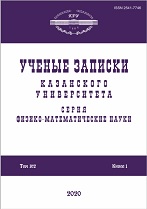|
The modern method of creating dynamically scaled models to study aircraft flutter characteristics
A. V. Dolgopolov, D. A. Kazancev, I. V. Markin, O. A. Orlova, S. V. Shalaev
Central Aerohydrodynamic Institute named after prof. N.E. Zhukovsky, Zhukovsky, 140180 Russia
Abstract:
A complex research, which included the design, manufacture, and testing of a dynamically scaled model of the all-moving tail (AMT) of an aircraft with the numerical calculations at each stage, was carried out. The dynamically scaled model was designed to study flutter characteristics in a wind tunnel. For the all-moving tail, the model consists of a plywood core with fiberglass, carbon fiber, and shaping foam material, all glued layer by layer. In order to reliably determine the flutter boundaries, the dynamically scaled model should accurately reproduce the dynamic characteristics of the full-scale structure. With this aim, an approach was developed to obtain the experimental modal characteristics and refine the dynamic mathematical models at each stage of manufacturing of the dynamically scaled model. For the dynamically scaled model refinement, one of the mathematical models was structurally similar based on finite elements, while the other one was made based on the polynomial method with plate and beam elements and then used to calculate the flutter boundaries. This approach ensured the high accuracy in modelling the dynamic properties of the full-scale all-moving tail and in the experimental determination of the flutter boundaries.
Keywords:
dynamically-scaled model, flutter, modal test, design, modal characteristics, numerical model, wind tunnel.
Received: 25.05.2020
Citation:
A. V. Dolgopolov, D. A. Kazancev, I. V. Markin, O. A. Orlova, S. V. Shalaev, “The modern method of creating dynamically scaled models to study aircraft flutter characteristics”, Uchenye Zapiski Kazanskogo Universiteta. Seriya Fiziko-Matematicheskie Nauki, 162, no. 4, Kazan University, Kazan, 2020, 441–454
Linking options:
https://www.mathnet.ru/eng/uzku1573 https://www.mathnet.ru/eng/uzku/v162/i4/p441
|

| Statistics & downloads: |
| Abstract page: | 227 | | Full-text PDF : | 130 | | References: | 25 |
|




 Contact us:
Contact us: Terms of Use
Terms of Use
 Registration to the website
Registration to the website Logotypes
Logotypes








 Citation in format
Citation in format 